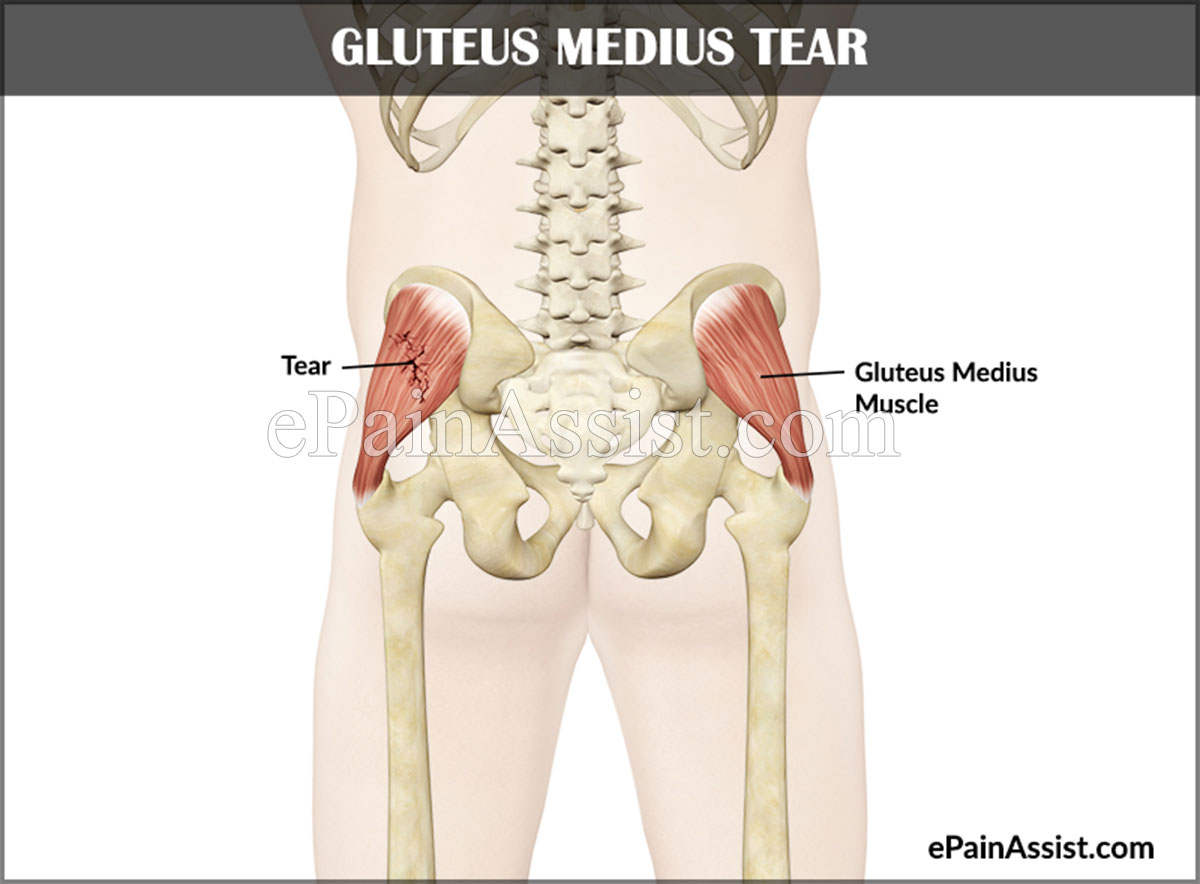What is Gluteus Medius Muscle and What is its Function?
The Gluteus Medius Muscle along with its counterpart the Gluteus Maximus Muscle forms what is known as the buttocks. The Gluteus Maximus muscle covers lower one third part of the Gluteus Medius Muscle. The function of the Gluteus Medius Muscle is to promote rotation of the thigh outwards thus making it easier for a person to walk steadily without falling unnecessarily. The Gluteus Medius Muscle is attached to the thigh bone near the hip joint on the greater trochanter. The other end of the muscle is joined to the ilium which is a part of the pelvic bone. Gluteus Medius Tear can be caused due to many reasons. If a person has a habit of sitting with the legs for long duration, then it can lead to Gluteus Medius Tear. Also, people working as greeters who have to stand on their feet for prolonged periods of time are also at risk for Gluteus Medius Tear.[1] Manual laborers who tend to lift and carry heavy items throughout the day can also strain or tear the Gluteus Medius Muscle due to the excessive pressure put on these muscles. Athletes who participate in long jumps or high jumps also carry a risk of Gluteus Medius Tear due to the force with which they land after making the jump. In case there is a Tear of the Gluteus Medius Muscle, then the affected individual may end up having a significant limp with walking and giving it a hobbling appearance. The greater trochanter to which the Gluteus Medius Muscle is attached to has a bursal sac with fluid in it which protects the greater trochanter from any insult. This sac may at times get inflamed resulting in pain to the hip region. This condition is medical terminology is termed trochanteric bursitis. Gluteus Medius tear is best treated with warm and cold compresses, gels, and thigh and groin supports which are easily available in the market.

Signs and Symptoms of Gluteus Medius Tear
Some of the symptoms which indicate a tear of the Gluteus Medius Muscle are:
- You will feel pain in the lower back along the belt line area.
- You may also experience symptoms of hip and buttock pain due to Gluteus Medius Tear.
- The pain that you experience may radiate down the legs from the outer part of the leg to the inner part.
- You may also have pain when lying down on one side.
- Person suffering from a Tear of the Gluteus Medius Muscle may also have difficulty with sitting for a period of time.
- You may also experience pain with standing as well
- You may have difficulty walking with a visible hobble to your gait.
What can Cause Gluteus Medius Tear?
Some of the activities which may result in Gluteus Medius Tear are:
- Sitting cross legged for substantial amount of time
- Standing on hard floors like a cemented floor for prolonged periods of time can result in the tear of the Gluteus Medius Muscle
- Repetitively carrying heavy items and walking
- Repetitively carrying a child on the hip may lead to Gluteus Medius Tear
- Doing aggressive aerobic exercises
- Running
- Aggressive weightlifting.
Risk Factors of Gluteus Medius Muscle Strain or Injury
Some of the medical conditions which may result in Tear of the Gluteus Medius Muscle are:
- Sacroiliac joint dysfunction [2]
- Trochanteric bursitis [3]
- Hip dislocation
- Piriformis syndrome[4]
- Tensor fascia lata syndrome
- Intervertebral stenosis
- Ankylosing spondylitis[5]
- Cauda equina syndrome.

What is the Treatment for Gluteus Medius Tear?
Some of the treatments for Gluteus Medius Tear are:
Rest: It is important to take ample rest so as to expedite the healing process of Gluteus Medius Tear.
NSAIDs: Use of NSAIDs is recommended to control swelling, pain, and inflammation associated with Gluteus Medius Tear.
Cold Therapy Treatment for Gluteus Medius Tear: There are many forms of gels and cold packs available in the market and over the counter which can go a long way in helping with treatment of an injured Gluteus Medius Muscle. The gels that are available are normally used immediately after an injury or strain as it immediately cools the area and prevents swelling from developing in the area. The gel is used by rubbing it at the injured site and the surrounding areas. One can even use an ice pack or cold gel pack as a form of conservative treatment to heal Gluteus Medius Tear.
Warm Therapy Treatment for Gluteus Medius Tear: This type of therapy can also be used for treating a Torn Gluteus Medius Muscle. This gel provides adequate warmth to the injured area without actually burning the area. It works fantastically well in relieving pain and stiffness post an injury or strain to the Gluteus Medius Muscle. One can use a hot and cold gel pack. To use the pack as a hot therapy, one needs to place the gel pack in the boiling water for 2-3 minutes and then place it over the.
Hip/Buttock Supports or Wraps: These supports or Wraps are designed in such a way that they help in relaxing the Gluteus Medius Muscle. It also covers the hip, thigh, and groin completely. These supports or wraps are made of neoprene which provides warmth and is quite comfortable when worn. These wraps or supports are highly recommended by sports medicine doctors for athletes who are prone to injuring Gluteus Medius Muscle or other muscles around the hip and thigh area.
